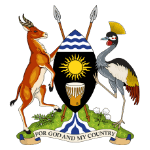Authors
- Dr Jesca Nsungwa Sabiti (Commissioner for Health Services, Reproductive and Child Health Department, Uganda Ministry of Health)
- Ntege Wilberforce (Monitoring and Evaluation Officer, Reproductive and Child Health Department, Uganda Ministry of Health)
- Dr Imaam Mutyaba (District Health Officer, Kiryandongo District)
- Goretty Kyomuhenda (Biostatistician, Kiryandongo District)
How the RMNCAH scorecard works in Uganda
The RMNCAH (reproductive, maternal, newborn, child and adolescent health) scorecard tool has been implemented in Uganda since 2016 with its use focused on the district level. The Ministry of Health led by the Maternal and Child Health Division, is responsible for providing oversight and support to districts to enable optimal implementation of the scorecard.
Kiryandongo District’s use of the RMNCAH scorecard
In Kiryandongo District, the district health team is responsible for the implementation of the scorecard tool. The district’s biostatistician is primarily responsible for its production and dissemination every quarter while the district health officer is responsible for ensuring its review. The scorecard is discussed during quarterly performance review meetings, community baraza (public) meetings and district sectoral meetings. Key participants of the scorecard reviews include:
- Health sector: the district health team, health facility managers and implementing partners
- Non-health district leadership: District Chief Administrative Officer, Resident District Commissioner, Local Council 5 (district level) Chairperson and District Secretary for Health.
- Native of the community
During scorecard discussions poorly performing indicators are highlighted and corrective actions are agreed upon, with timelines and responsibilities. Additionally, progress and changes in previously underperforming indicators and related actions are also reviewed, and overall performance is discussed with health facility managers and health workers.
The SMART framework (specific, measurable, achievable, results-oriented, time-bound) is recommended to help create effective actions that directly address the root causes of issues.
Using the scorecard to target action against an underperforming indicator
In the quarterly performance review meeting of October to December 2019, the scorecard highlighted underperformance of the first antenatal care attendance within the first trimester indicator. Kiryandongo district performance for this indicator was 24%, 10 percentage points lower than the national average of 34%. The causes of this low performance were discussed, and the following actions agreed upon:
| Action | Health staff involved |
| Offer pregnancy tests to women of reproductive age attending the outpatient clinics who have missed their menstruation period and strengthen health education talks on the importance of early antenatal care | Health facility staff, District health team members, Partners |
| Use immunisation sessions (both routine and outreach) to screen mothers for pregnancy | Health facility staff, District health team members, Partners |
| Involve village health teams who were trained in family health care in sensitising and mapping pregnant mothers in their communities so that they come early for antenatal care visits | Health facility staff, Village health team members, District health team members, Partners |
| Conduct community dialogues focusing on antenatal care starting with poorly performing health facilities (those with red indicators). A dialogue focused on antenatal care attendance with the goal of increasing, understanding, addressing problems, and questioning thoughts and actions. It engages the heart as well as the mind. | Health facility staff, Village health team members, Local council I (village level) staff, District health team members, District leadership, Partners |
| Improve male involvement. When males are involved as soon as they realise that their partner is pregnant, it becomes easy for the women to attend consequential antenatal care visits, deliver from the hospital and give birth to a healthy baby. | Health facility staffs, Village health team members, Local council I (village level) staff, District health team members, Partners |
| Conduct integrated outreaches. These are done to bring services closer to the people of the community especially in areas where we don’t have any health facility. They have to travel 5km to access the nearest health facility with Ministry of Health standards. In Kiryandongo District, such communities include Kanywamaizi, Kajebe, Kasanja, Vumulia and Kente. Therefore, the district’s intervention to extend essential services to them is through integrated outreaches which includes more than one service such as antenatal care, family planning, immunisation, HIV testing and linking the positive clients. | Health facility staffs, Village health team members, Local council I (village level) staff, District health team members, District leadership, Partners |
| Use the calculation for weeks of amenorrhea (when a woman may miss her period) instead of fundal height for a more reliable estimation of pregnancy stage | Health facility midwives |
Following the implementation of the above actions, coverage of the first antenatal care attendance within the first trimester from January to March 2022 had increased to 30%. Additionally, the number of health facilities with adequate performance (green) increased from two to five out of 22 health facilities. Interventions to improve early attendance of antenatal care and intensified health education also led to an increase in the percentage of pregnant women attending at least four antenatal care visits from 45% in quarter two in 2021 to 60% in quarter two in 2022.
Stakeholders working together to improve RMNCAH in the district
The scorecard brings together key stakeholders to objectively review and act to improve RMNCAH in Kiryandongo. The tool has enabled district leadership to be more aware and engaged in the RMNCAH programme and this has provided an avenue for successful advocacy for resources.
Further, the scorecard tool has triggered funding for community barazas (forums where the communities hold the government accountable for service delivery).Implementing partners such as UNICEF and UNFPA have funded review meetings and scorecard trainings while other district-based partners including International Rescue Committee (IRC), AVSI, BAYLOR-Uganda, Agency for Cooperation in Research and Development (ACORD) also participate in the review process and support implementation of corrective actions.
The use of the scorecard is leading to improved public health outcomes. With continued commitment of the district health team and the galvanised stakeholder engagement, its continued use is bound to contribute even further to improved RMNCAH in the district.
